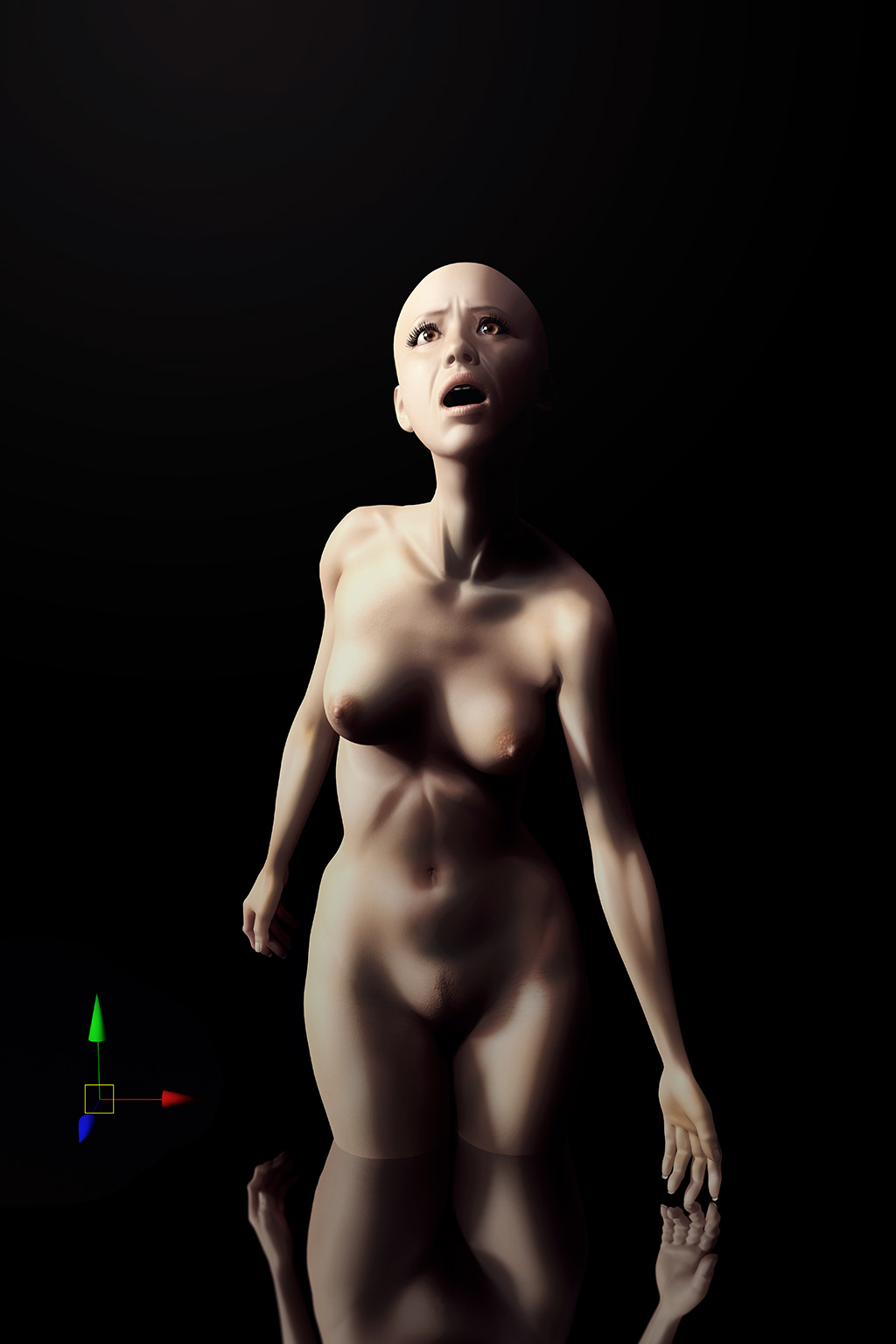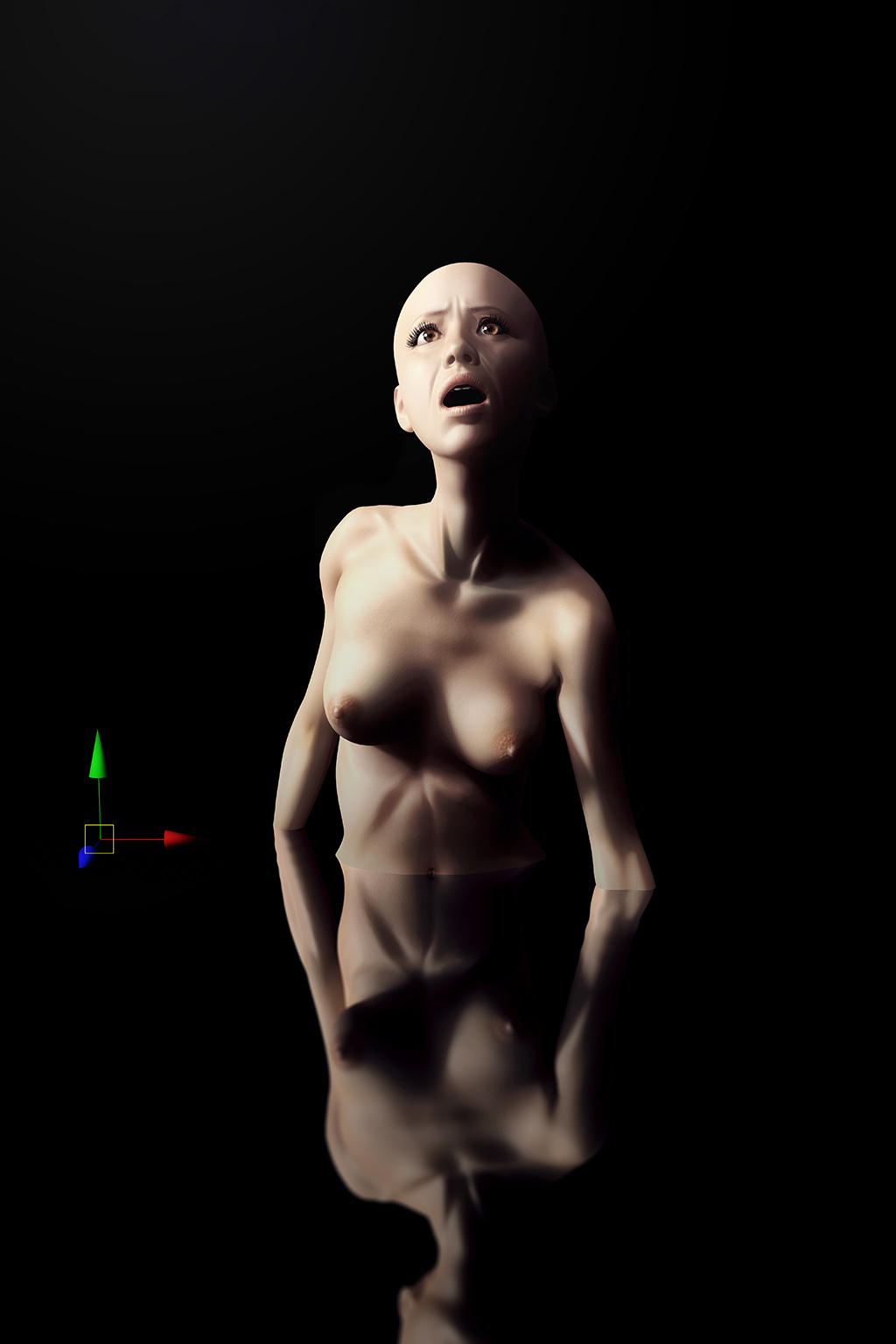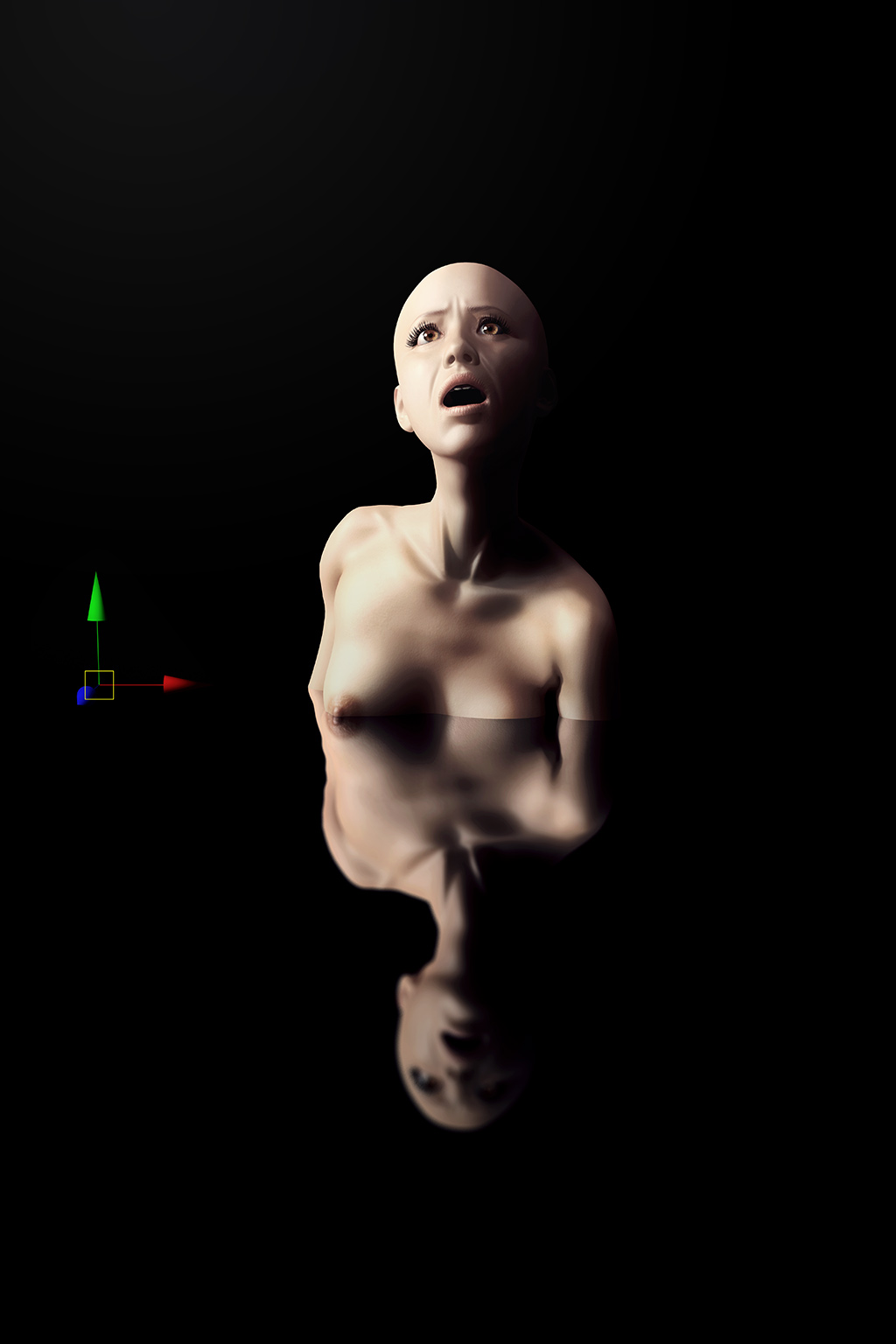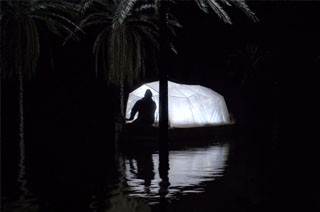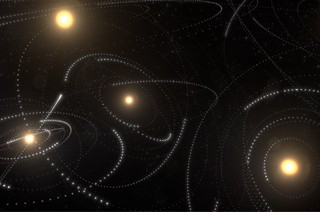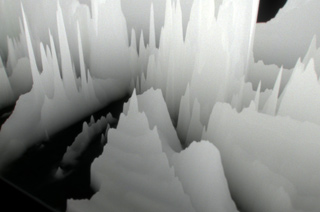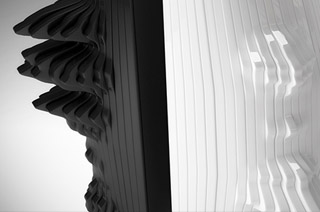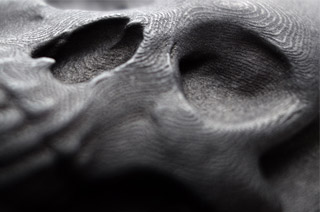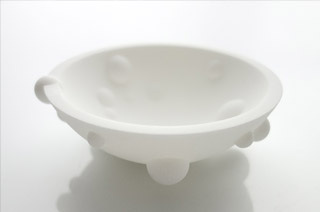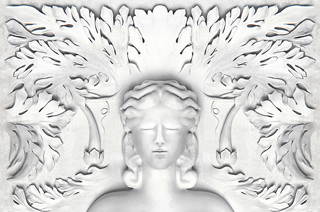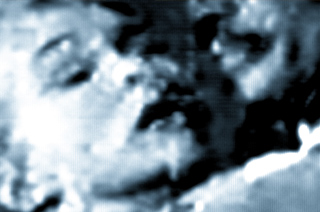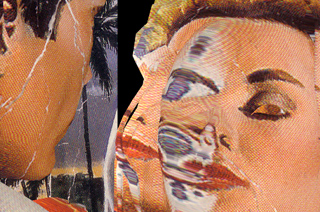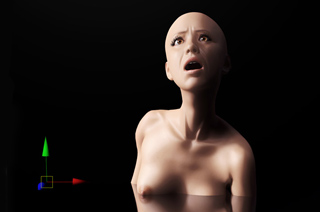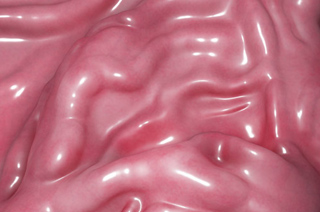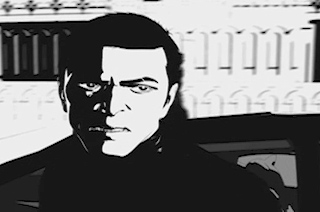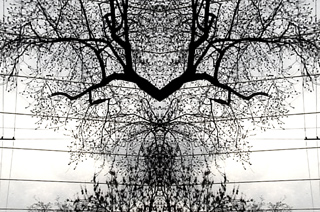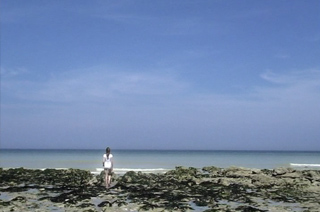Y TRANSLATION. OPHELIA
Translate Y : 62,794. Translate Y : 94,417. Translate Y : 112,622. Translate Y : 145,736.
2009. 3D image in 40 cm x 60 cm format.
“For more than a thousand years sad Ophelia
Has passed, a white phantom, down the long black river.
For more than a thousand years her sweet madness
Has murmured its romance to the evening breeze.”
Rimbaud. (Translation by Wallace Fowlie)
This series consists of four images, each depicting a woman held in an identical position with a reflective plane symbolizing water.
There are two possible interpretations for this series.
One cannot help but to have an emotional reaction at the sight of a woman in distress, frozen still with horror.
Her eyes are turned to the sky, as if she were imploring divine salvation. The water level rises inexorably; nothing can stop it. The series relates the last moments before her death, when the woman ultimately drowns. Both antiquity and more contemporary works typically depict drowned figures after their death, as dead bodies floating horizontally on water. This scene breaks away from traditional representations. The aim is to communicate the anxiety preceding death, rather than to illustrate its ultimate result.
The other interpretation is mathematical and is linked to 3D computer graphics.
The important element of this series is the axis of translation of each reflective plane. It is visible to the left of every image. This element breaks the spell and destroys the illusion. We are seeing a virtual image: just points in space and mathematical calculations. From one image to the next, the only change is the position of the reflective plane along the Y-axis. Each image title indicates the Y-coordinate for the reflective plane.
The series plays on the inferences one naturally makes from images. Simply changing the position of a plane is enough to construe an expression of time and to generate a story and emotions. Astounding, isn’t it?
Archive, Image, 2007

